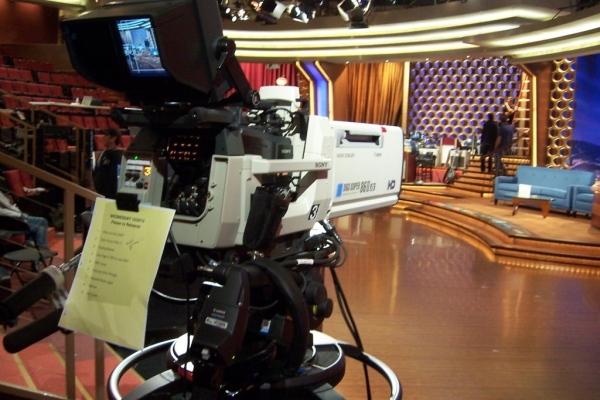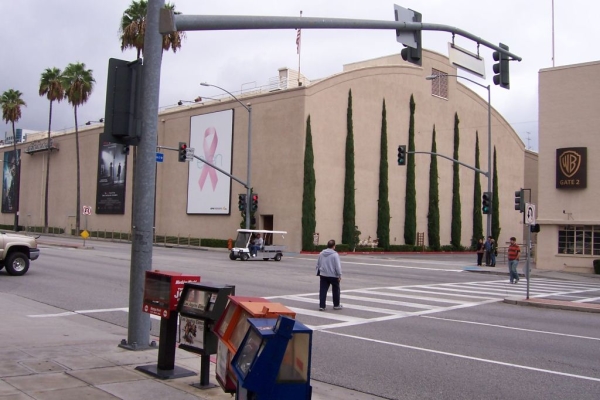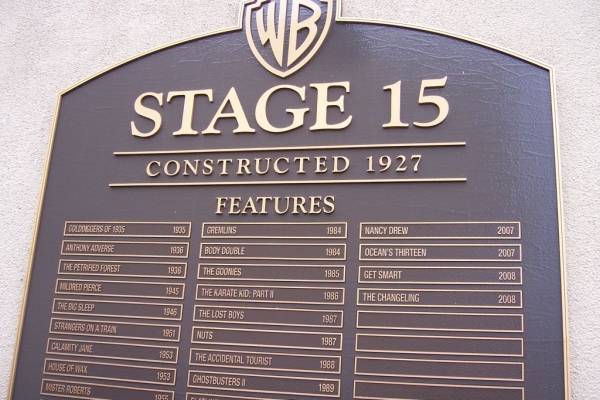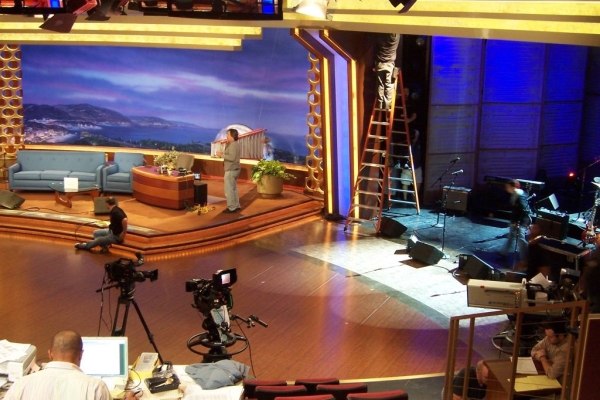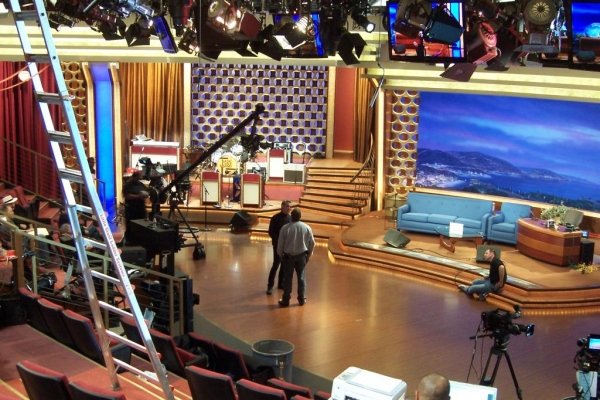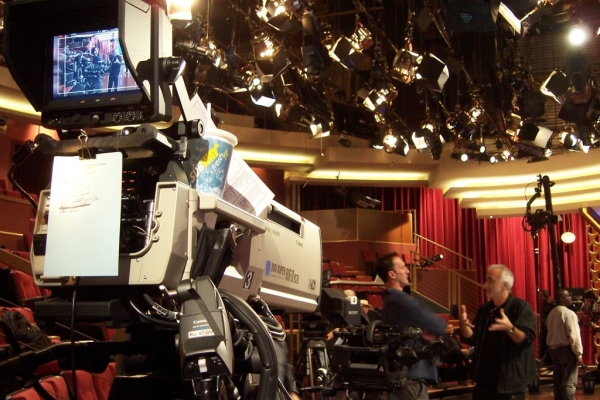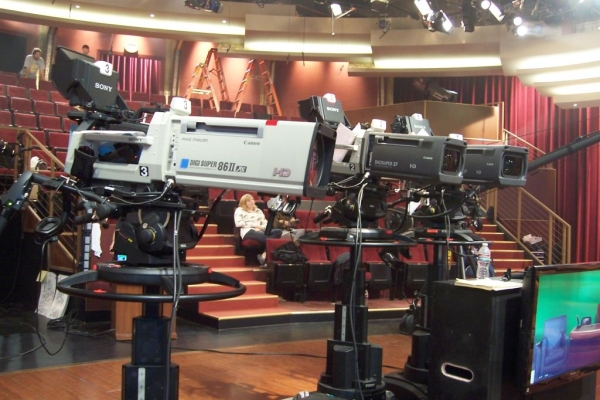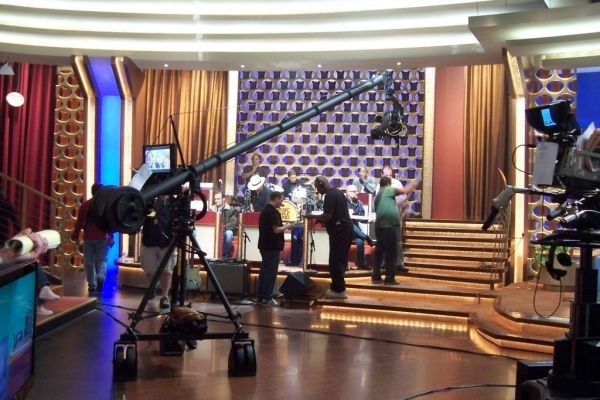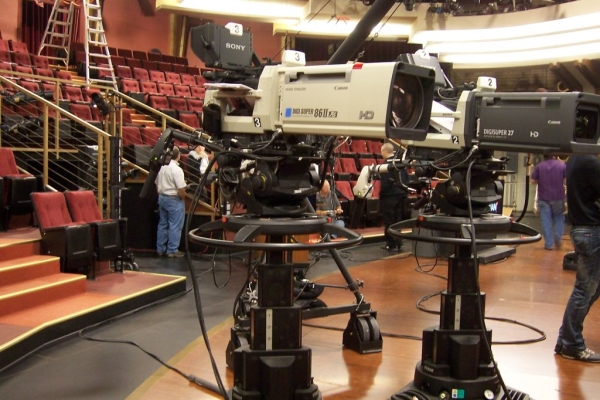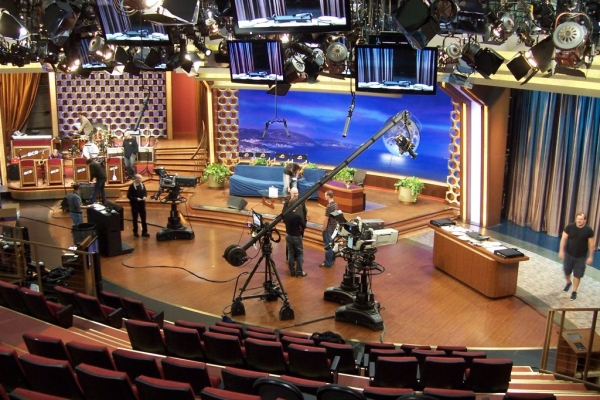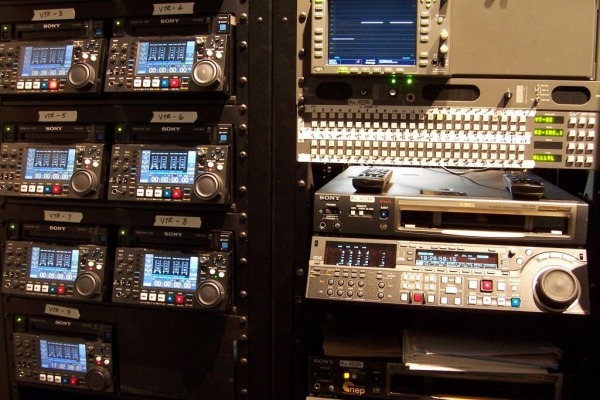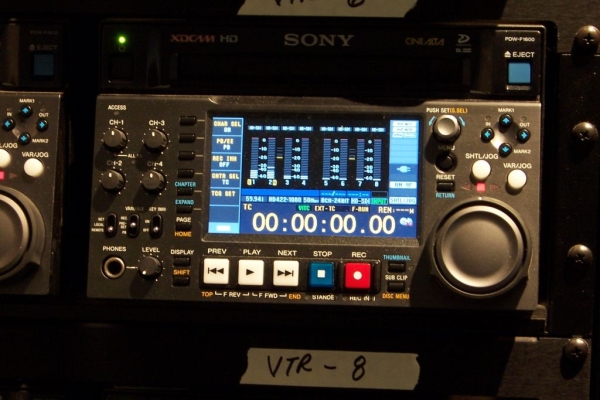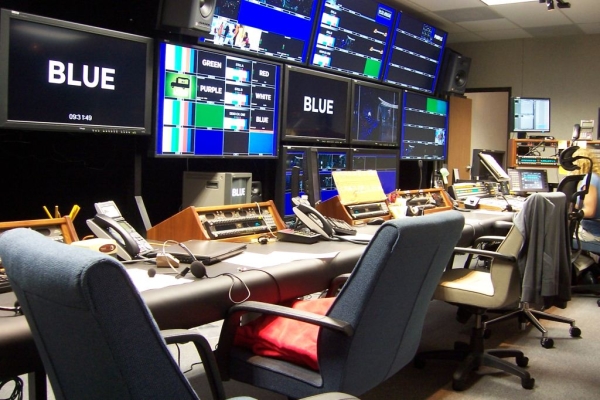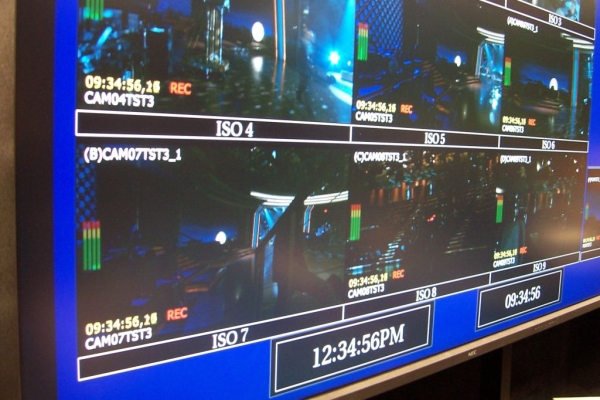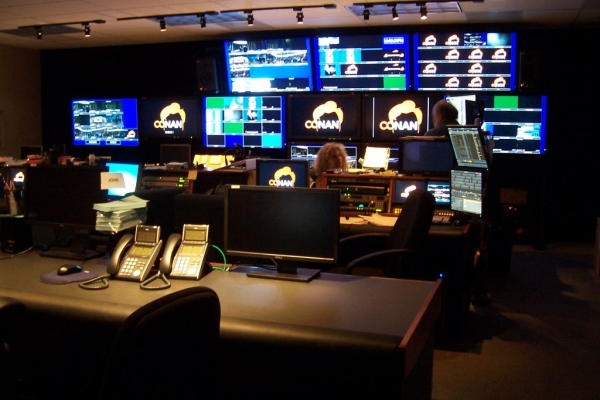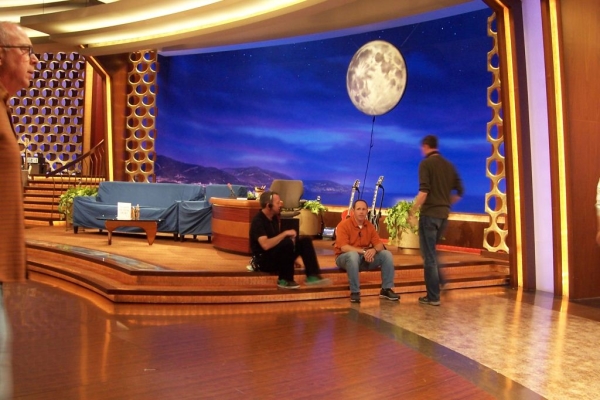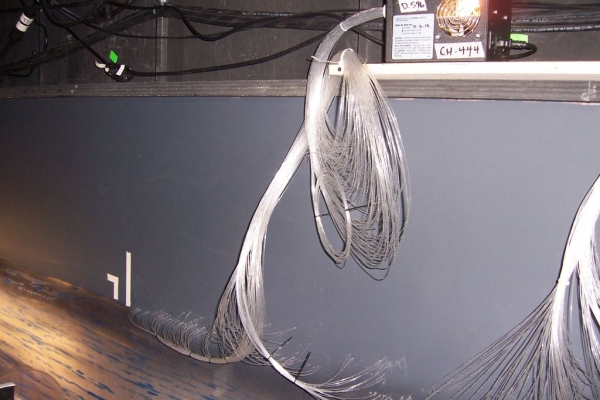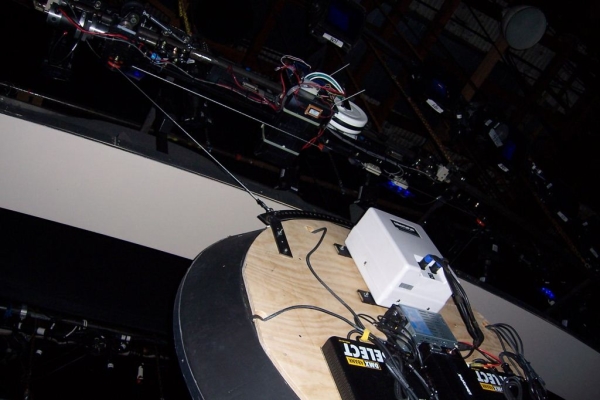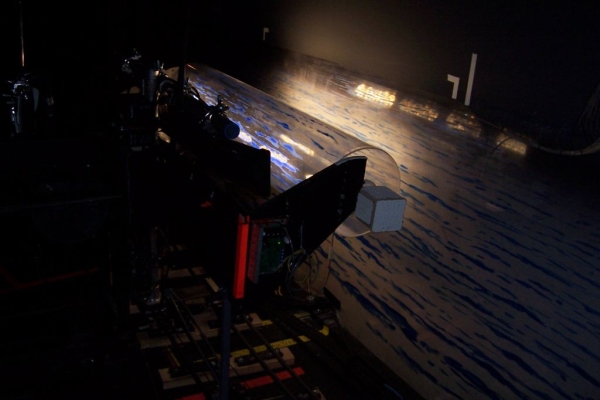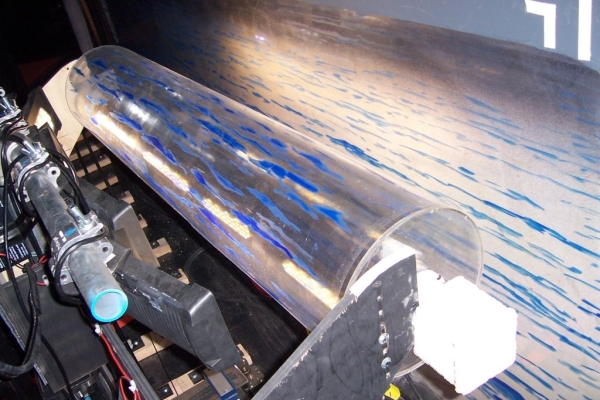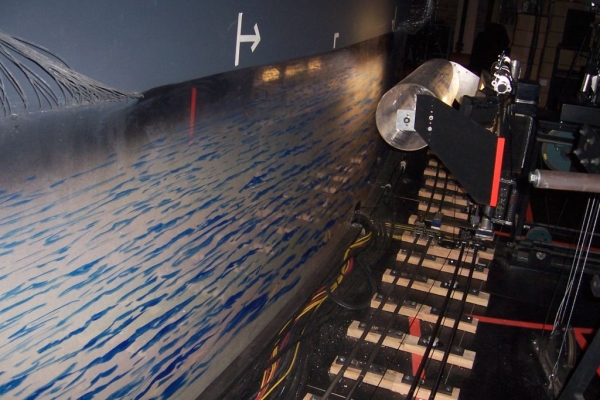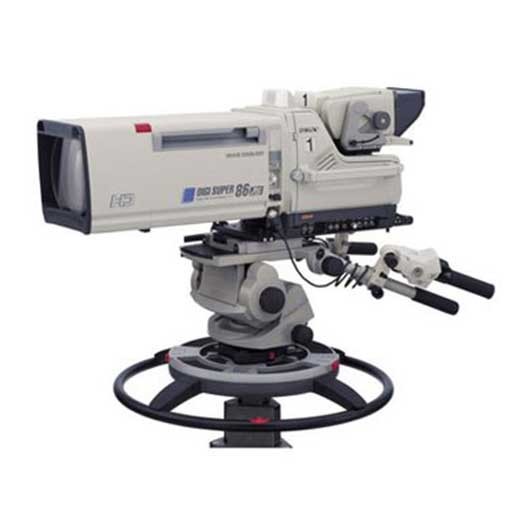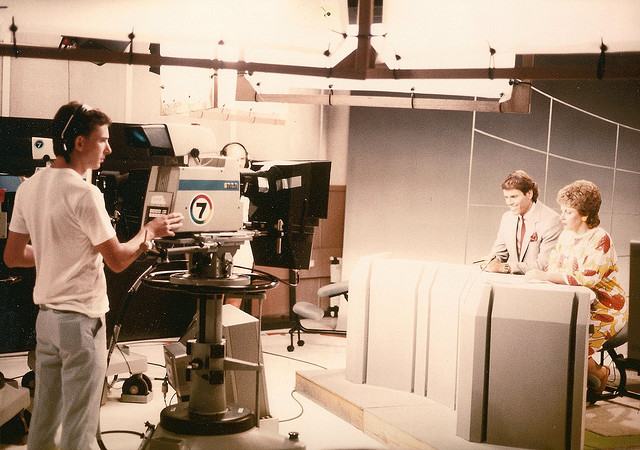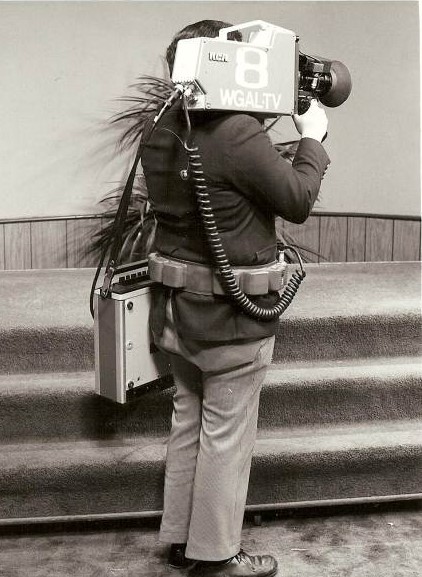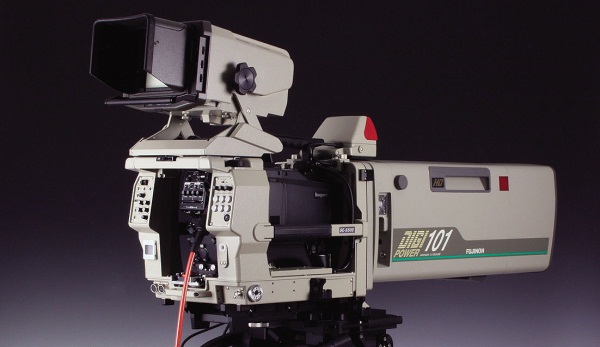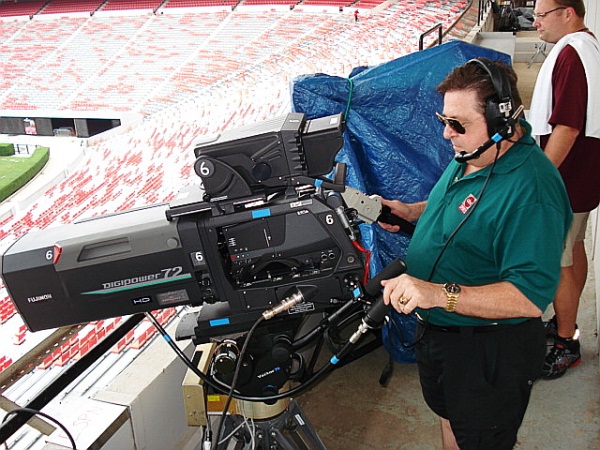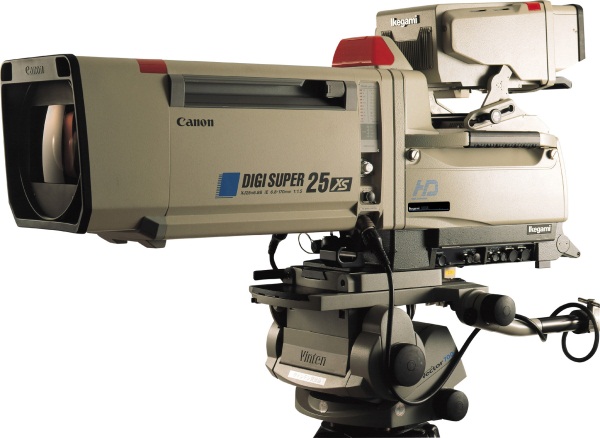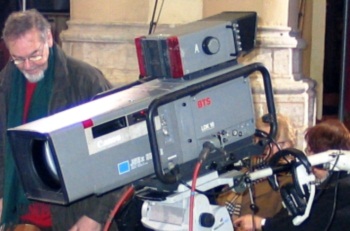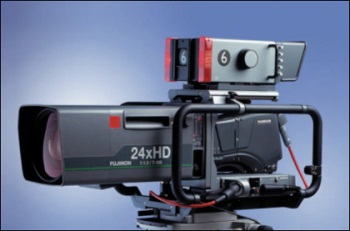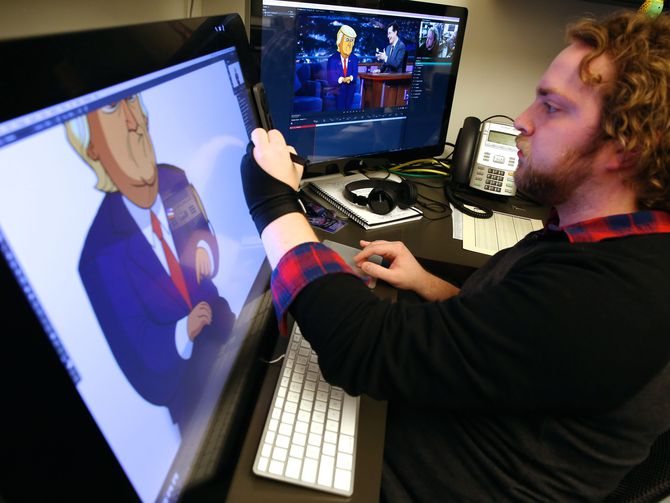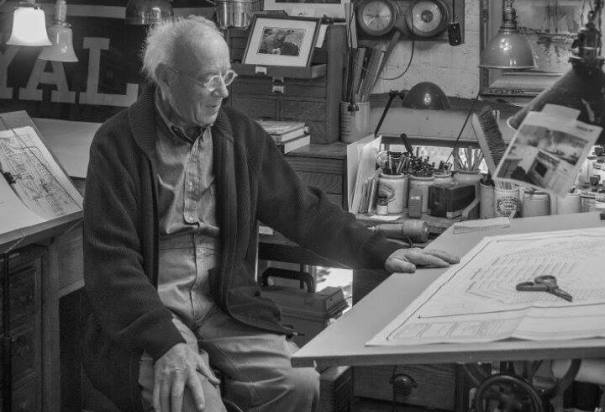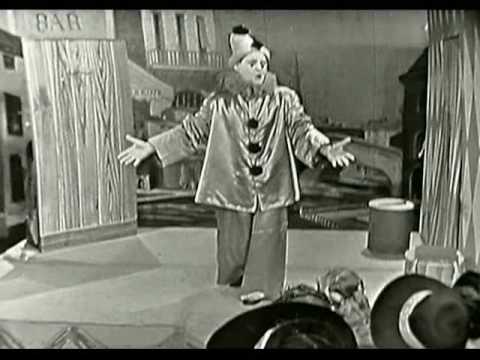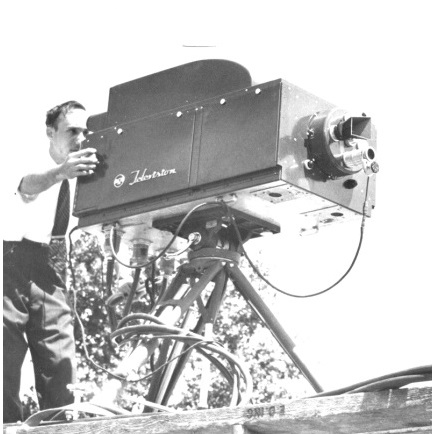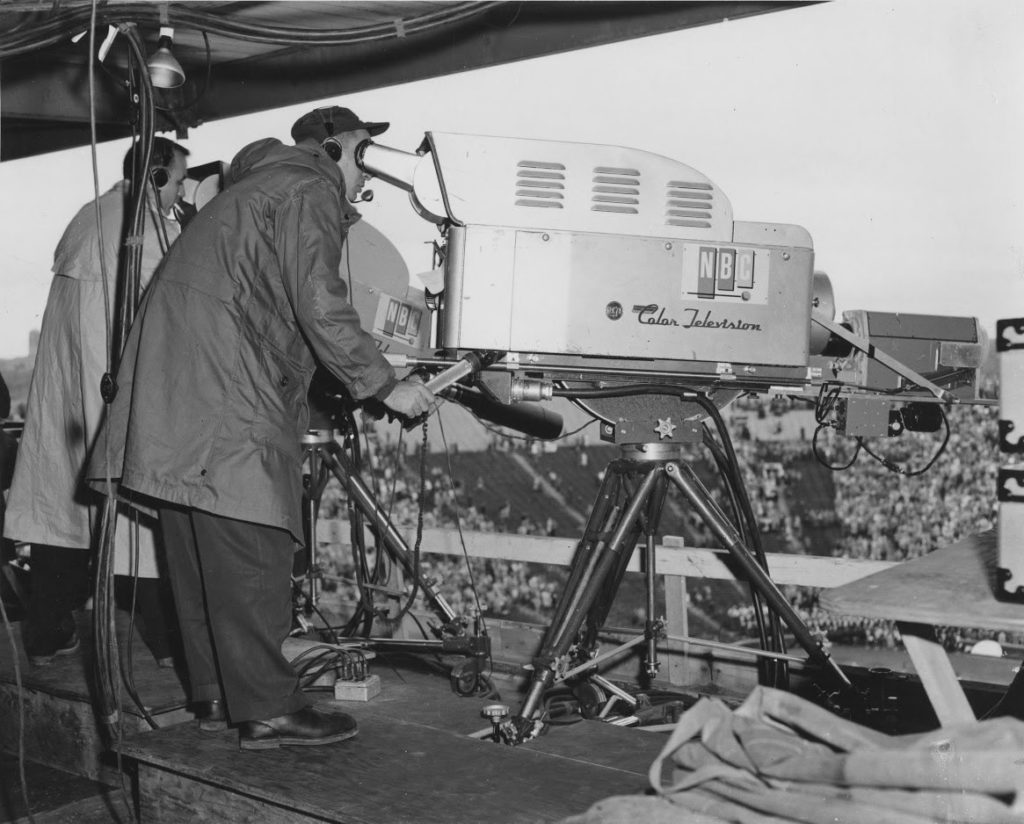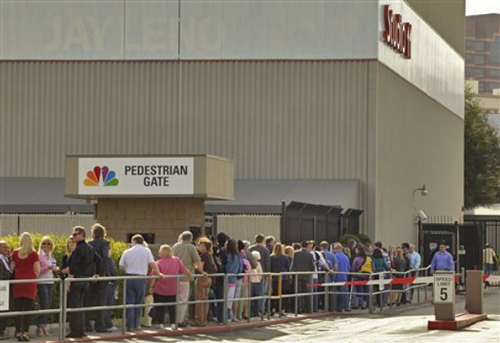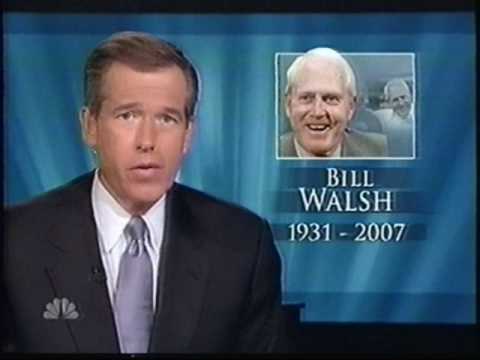October 22, 1962…In The Oval Office For The Cuban Missile Crisis
As Told By The Guy In The Red Circle, A MUST READ STORY! From the October 21, 2012 edition of The Savannah Morning News, here is the story in his own words.
______________________________________________________________________________
Barry Ostrow was front and center for the Cuban Missile Crisis Speech! This is the fascinating story of that fateful day…October 22, 1962. Just out of college, he was a brand new hire at WTOP and has a great story to tell! Enjoy and share. -Bobby Ellerbee
My number was up. Some five months after graduation from Ithaca College, my friends and neighbors on the draft board in Poughkeepsie, N.Y., had decided it was time for me to take my pre-induction Army physical. The day designated for my exam at Fort Holabird, Md. – Oct. 22, 1962 – would prove to be not only an emotional personal experience for me but also for the entire nation.
I had been working in Washington, D.C., since June as part of the “management training” program at WTOP-TV, a CBS affiliate, and the CBS News Bureau was located in WTOP’s Broadcast House off Wisconsin Avenue in northwest Washington.
It was a heady time for a young TV production graduate. I was making a whopping $50 a week, but working on loan to CBS more than made up for my penury. From the beginning I served as a floor director for a who’s who of nationally known journalists – Walter Cronkite, Harry Reasoner, Roger Mudd, George Herman, Robert Pierpoint, Marvin Kalb, and bureau chief George Schoenbrun.
On the local news team was an unknown, brash reporter named Sam Donaldson.
Some highlights leading up to Oct. 22 included crewing the expansion of the “CBS Evening News” from 15 minutes to a half hour, an Oval Office taping and news conferences by President John F. Kennedy, and briefly meeting Edward R. Murrow.
On Oct. 21, I was working on the Sunday morning interview show, “Washington Conversation.” The CBS newsroom was buzzing with talk of “something big” going on. Most thought it had to do with the Berlin Wall. The president’s cabinet and the nation’s military leaders reportedly had been spotted entering and leaving the White House, but no one suspected that the brewing crisis was just 90 miles off the tip of Florida.
The next day I rendezvoused with a military bus heading to Fort Holabird, an hour away outside Baltimore. After a morning of filling out forms and some preliminary poking and prodding, our group lined up on the wooden floor of a spare, barracks-like room dressed only in our shorts. As we awaited our next humiliation, a soldier called out, “Is there a Barry Ostrow from CBS in the room?”
As perhaps 30 people looked on, the soldier handed me a telephone. They listened intently to my side of the conversation:
“The White House? How am I supposed to get to the White House? I’m standing here an hour away and half naked in the middle of my draft physical.”
At this point, those in the room began chanting, “Go. Go. Go.”
An Army recruiting officer helped. Within a few minutes, I was in his car speeding down the Baltimore-Washington Parkway. En route, he did his best to convince me that if there was a balloon about to go up, it would be in my best interest to sign up with him on the spot.
The recruiter took me to my apartment on Connecticut Avenue just south of the National Zoo, waited while I changed into a suit and drove me to Broadcast House where he left me with his business card.
I picked up my gear – headphones and a small makeup kit – and hurried out to Wisconsin Avenue to flag down a cab. I always carried the kit with me even though Kennedy was always tanned and freshly shaved. I never had to use it on him. Many politicians, such as Hubert Humphrey and Everett Dirksen, always appreciated a little help with their appearance.
It was now about 3 p.m., and the D.C. rush hour hadn’t begun. A cab picked me up, and a lawyer in the back seat was willing to share a ride downtown. When we arrived at 1600 Pennsylvania Ave., I reached into my jacket for my wallet and discovered I had left it in my apartment.
My co-rider shrugged off the debt, maybe $3, saying, “I think I can trust someone going to the White House.”
He gave me his business card and probably was surprised when a check arrived at his office a couple of weeks later.
Before Dallas in November 1963, it was relatively easy to enter the White House. At a pre-designated gate, the security person had only to check my I.D. against an index card in a small box of approved media credentials. I don’t recall any metal detectors or pat downs.
I caught up with the late Bob Camfiord, the television pool director, outside CBS’ big white remote truck parked near the Rose Garden. Rumors were flying, but no one knew for sure why we were there other than the president would address the nation at 7 p.m.
About 5 p.m., I was ushered down the narrow West Wing hallway outside the office of Pierre Salinger, the president’s press secretary, and into the Oval Office. This wasn’t my first rodeo, but it was always a thrill each time I entered this iconic room. The white curved walls. The blue rug with the presidential seal. The facing white couches and, between them, JFK’s rocking chair.
I sat behind the president’s Resolute desk standing in for him while Camfiord, out in the truck, conducted camera, sound and light checks.
At about 6 p.m. embargoed copies of the president’s speech began to circulate in the West Wing. The topic was not Berlin, but Cuba and the discovery of Soviet missile bases under construction there. Soon those missiles would be operational and pointed at Washington and other U.S. locations only minutes away.
America’s second-youngest president was about to face off with the bellicose Nikita Khrushchev. The doctrine of mutually assured destruction could be tested over a small Caribbean island.
While the imminent prospect of a nuclear war was frightening and heightened by the thought that we were all standing at Ground Zero, there was calmness in the room. Each of us was involved with our immediate responsibilities.
We were not yet privy to the tension that had been building since the missile installations were discovered on Oct. 14 during a U-2 surveillance flight.
The Oval Office began to fill up. In addition to the CBS pool technicians, there were administration officials, at least three news film cameramen and five still photographers.
Shortly before 7 p.m., the president emerged through one of the doors almost hidden in the curve of the office walls. Usually relaxed and casual with the media, this night he appeared tense. I was in my usual position, attached to the camera by my earphones and crouched under the lens directly in front of the president.
At Camfiord’s direction, I raised my arm at 5 seconds before the speech and gave the president a verbal warning. Moments later I pointed in his direction and he began to speak.
Later, in the remote truck, I used the network’s dedicated landline to New York to call my parents. Like so many Americans, especially those in or near major East Coast cities, they were deeply concerned. My mother kept urging me to return home from Washington, but I reminded her that if the missiles should begin to fly, there would be no refuge.
I wish now that I had kept a diary of the ensuing six days of the crisis when the three networks broadcast daily from the White House, the U.S. Department of State, the Pentagon and the headquarters of the Organization of American States.
I remember it as a time of dark remote truck interiors, dark control rooms and dark television studios.
To cover official Washington, CBS brought in Bobby Vitarelli (later, director of the “CBS Evening News”) from New York to work with Camfiord.
They also pressed WTOP-TV’s senior directors Clark Pangle, Bill Linden and Eddie Colbert into service. Remote trucks were at a premium, and I remember Colbert standing outside a station wagon on the White House grounds looking inside at a bank of monitors and directing a stand-up report.
The technicians worked around the clock, sleeping – when they could – on cots at Broadcast House. Working at “golden time pay,” they made thousands of additional dollars that week. Those of us further down the totem pole filled in working as assistant directors and directors.
I readied a lot of film to be rolled and directed a few one-camera cut-ins in the studio with talent like Schoenbrun, Mudd and Kalb. With all of the CBS overtime, I made my first thousand-dollar payday.
As the nation and the world held its collective breath, the crisis played out. Khrushchev blustered, Adlai Stevenson admirably stated the U.S. case in the United Nations, and Kennedy resolutely pursued the naval blockade of Cuba and offered to remove (aging) missiles from Turkey.
And then it was over.
In March 1963, I finally completed my physical at Walter Reed Hospital in Washington, and by August I was in the Fort Carson, Colo., public information office producing mini film documentaries about the base for television stations in Denver and Colorado Springs.
That’s where I heard about the assassination in Dallas, 13 months to the day after Kennedy’s Cuban Missile Crisis speech. The world, of course, was in shock. For me, Nov. 22, 1963, held a particularly personal emotional impact. As I watched the nation grieve, my thoughts were, “I knew him.”
In the ensuing decades, I’ve had many great experiences from the birth of my children and grandchild, to meeting other presidents, to the good fortune of seeing much of the world. But if I had to pick one outstanding time in my life, it would have to be the events of October 1962.
ABOUT BARRY J. OSTROW
Barry J. Ostrow began his career in communications at WTOP-TV where he was on the television production staff working primarily with CBS News. Following Army service with the Armed Forces Korea Network, he worked as a director at WETA-TV in Washington, D.C., and WBZ-TV in Boston.
Later he worked as department head for biomedical communications at Bell & Howell and television division manager for Scientific Communications, both in Chicago. In the cable television industry, he guided television production in the northeast region of TelePrompTer out of Hartsdale, N.Y.
Ostrow spent 31 years guiding communications programs in educational settings, including Richmond, Va., Lee County, Fla., and Savannah-Chatham public schools, South College and Armstrong Atlantic State University.
Since his retirement in January 2010, he has been a freelance writer and continues his passion for international travel.
http://savannahnow.com/news/2012-10-21/savannah-man-cued-jfk-cuban-missile-crisis-speech#.UUL90hzvsuB
Source
